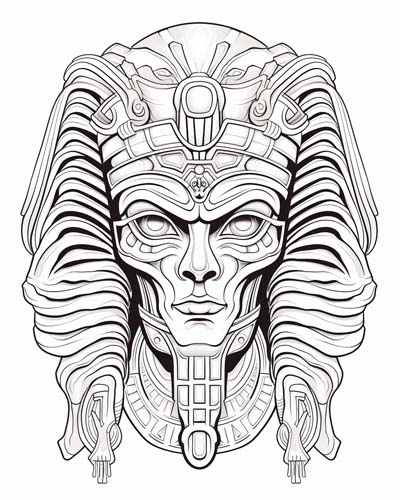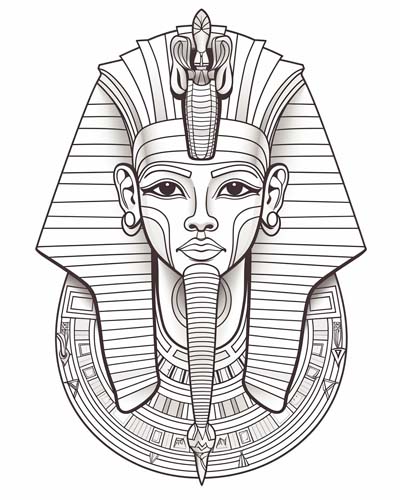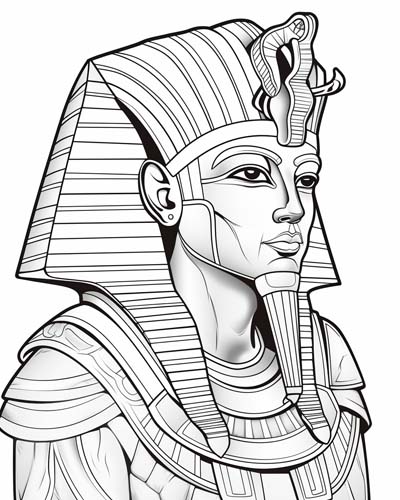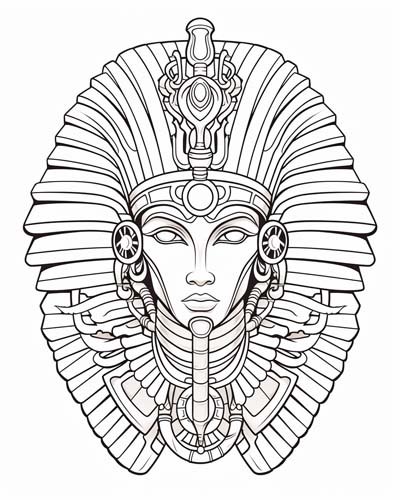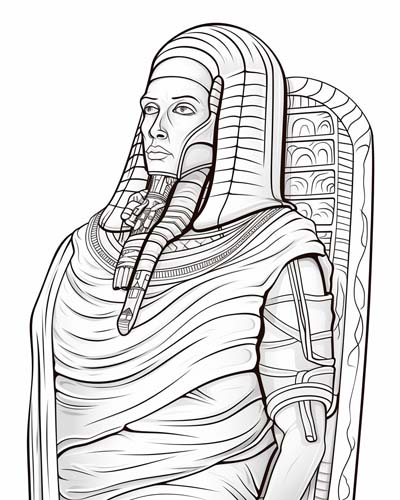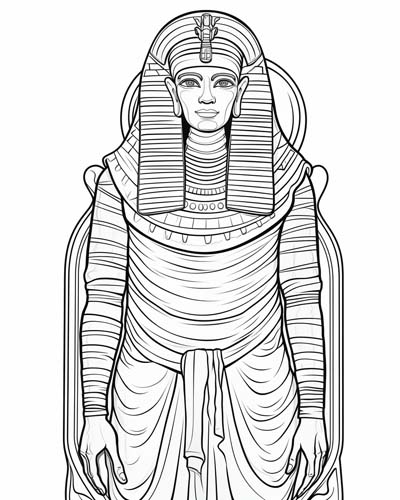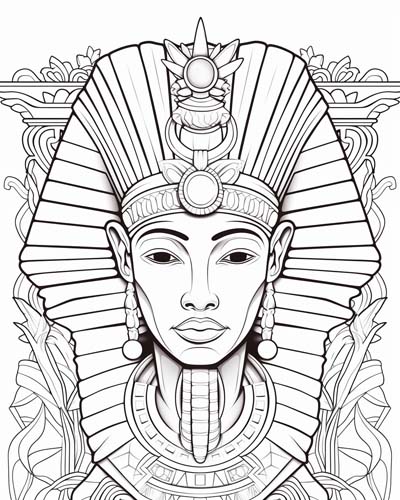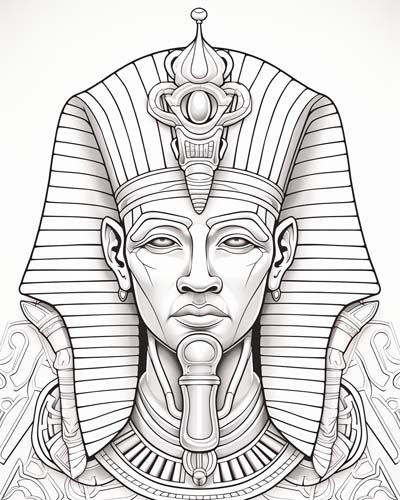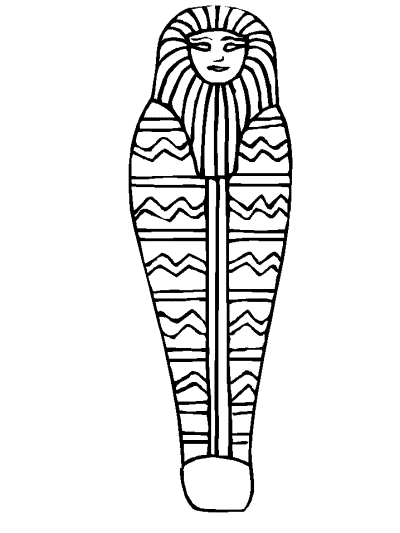Printable Coloring Pages
Egyptian Mummy coloring pages
Explore the world of ancient Egypt with our Egyptian Mummy coloring page section. Capture the essence of mummification as you bring these historical figures to life on the page. Envision the careful wrapping process, the ornate burial masks, and the symbolic hieroglyphs that adorned these preserved remains. Whether you choose bold or subtle colors, let your creativity illuminate the enigmatic practice of mummification, a lasting symbol of ancient Egyptian beliefs and rituals.
The mummy of King Tutankhamun:
One of the most famous and well-documented Egyptian mummies is that of King Tutankhamun, often referred to as King Tut. Discovered in 1922 by British archaeologist Howard Carter in the Valley of the Kings, King Tut's tomb became an archaeological sensation.
The story of King Tut's mummy begins with his unexpected death at a young age, around 18 or 19 years old, during the 18th dynasty of ancient Egypt. The cause of his death remains a subject of speculation, with theories ranging from illness to injury.
Upon his death, King Tut was subjected to the elaborate process of mummification, a practice reserved for pharaohs and individuals of high social standing. His internal organs were removed, and his body was carefully preserved using natron, a natural desiccant. The mummy was then wrapped in linen bandages, and various amulets and charms were placed within the layers.
In 1922, when Howard Carter and his team uncovered King Tut's tomb, they found it mostly intact, unlike many other royal tombs that had been looted over the centuries. The innermost coffin and the mummy itself were nestled within a series of ornate coffins, and the burial chamber contained a wealth of treasures and artifacts.
The mummy of King Tutankhamun provided valuable insights into ancient Egyptian burial practices, funerary rituals, and the artistry of the time. Today, King Tut's mummy is housed in the Valley of the Kings, attracting millions of visitors who marvel at the remarkable preservation of this young pharaoh from more than 3,000 years ago.
